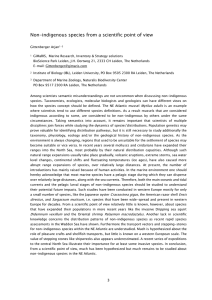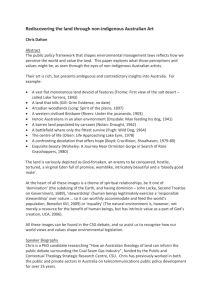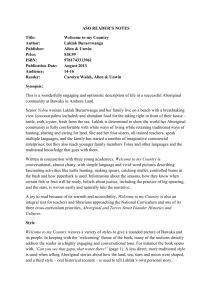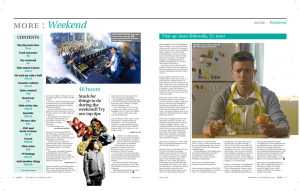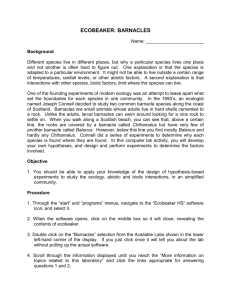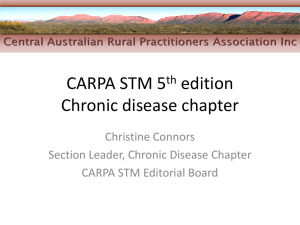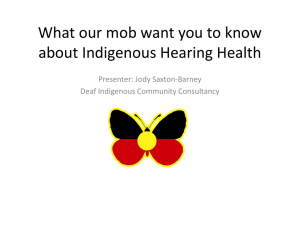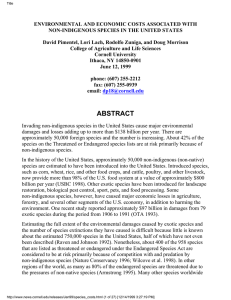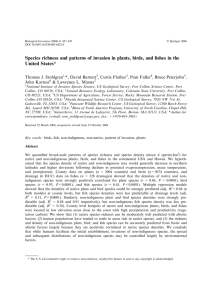Offshore Intertidal Hard Substrata: a new habitat promoting
advertisement
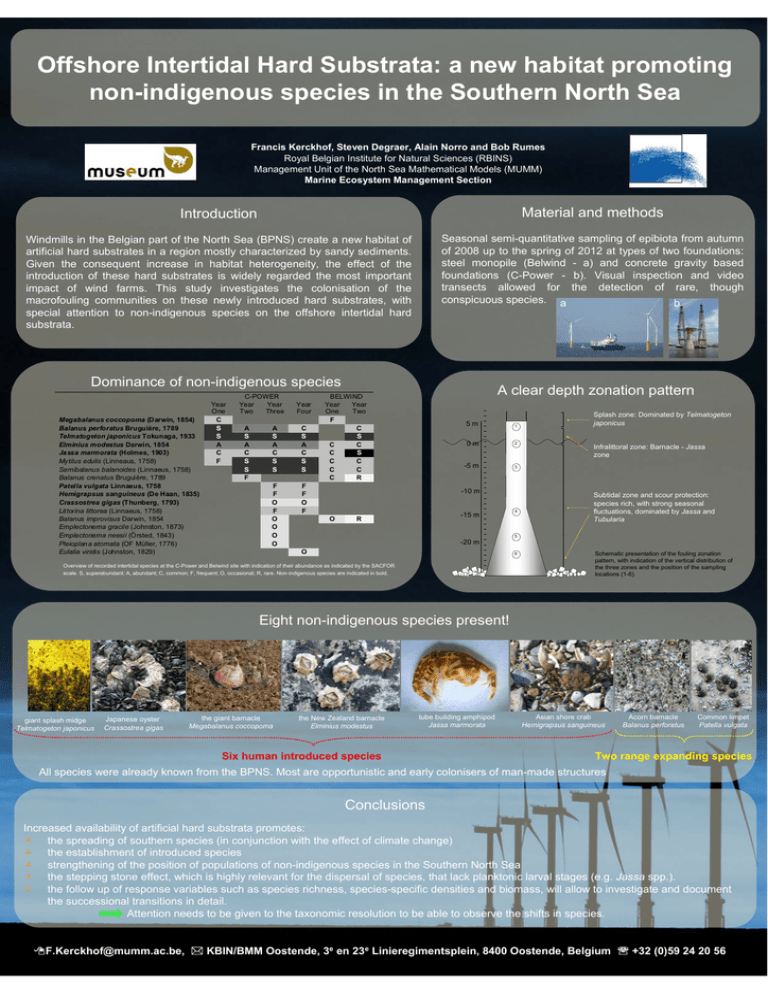
Offshore Intertidal Hard Substrata: a new habitat promoting non-indigenous species in the Southern North Sea Francis Kerckhof, Steven Degraer, Alain Norro and Bob Rumes Royal Belgian Institute for Natural Sciences (RBINS) Management Unit of the North Sea Mathematical Models (MUMM) Marine Ecosystem Management Section Introduction Material and methods Windmills in the Belgian part of the North Sea (BPNS) create a new habitat of artificial hard substrates in a region mostly characterized by sandy sediments. Given the consequent increase in habitat heterogeneity, the effect of the introduction of these hard substrates is widely regarded the most important impact of wind farms. This study investigates the colonisation of the macrofouling communities on these newly introduced hard substrates, with special attention to non-indigenous species on the offshore intertidal hard substrata. Seasonal semi-quantitative sampling of epibiota from autumn of 2008 up to the spring of 2012 at types of two foundations: steel monopile (Belwind - a) and concrete gravity based foundations (C-Power - b). Visual inspection and video transects allowed for the detection of rare, though conspicuous species. a b Dominance of non-indigenous species Megabalanus coccopoma (Darwin, 1854) Balanus perforatus Bruguiére, 1789 Telmatogeton japonicus Tokunaga, 1933 Elminius modestus Darwin, 1854 Jassa marmorata (Holmes, 1903) Mytilus edulis (Linneaus, 1758) Semibalanus balanoides (Linnaeus, 1758) Balanus crenatus Bruguiére, 1789 Patella vulgata Linnaeus, 1758 Hemigrapsus sanguineus (De Haan, 1835) Crassostrea gigas (Thunberg, 1793) Littorina littorea (Linnaeus, 1758) Balanus improvisus Darwin, 1854 Emplectonema gracile (Johnston, 1873) Emplectonema neesii (Örsted, 1843) Pleioplana atomata (OF Müller, 1776) Eulalia viridis (Johnston, 1829) Year One C S S A C F C-POWER Year Year Two Three A S A C S S F Year Four A S A C S S C S A C S S F F O F O O O O F F O F A clear depth zonation pattern BELWIND Year Year One Two F C S C C C S C C C C C R 5m 1 0m 2 -5 m 3 -10 m O -15 m R 4 Splash zone: Dominated by Telmatogeton japonicus Infralittoral zone: Barnacle - Jassa zone Subtidal zone and scour protection: species rich, with strong seasonal fluctuations, dominated by Jassa and Tubularia 5 -20 m O 6 Overview of recorded intertidal species at the C-Power and Belwind site with indication of their abundance as indicated by the SACFOR scale. S, superabundant; A, abundant; C, common; F, frequent; O, occasional; R, rare. Non-indigenous species are indicated in bold. Schematic presentation of the fouling zonation pattern, with indication of the vertical distribution of the three zones and the position of the sampling locations (1-6). Eight non-indigenous species present! giant splash midge Telmatogeton japonicus Japanese oyster Crassostrea gigas the giant barnacle Megabalanus coccopoma the New Zealand barnacle Elminius modestus tube building amphipod Jassa marmorata Six human introduced species Asian shore crab Hemigrapsus sanguineus Acorn barnacle Balanus perforatus Common limpet Patella vulgata Two range expanding species All species were already known from the BPNS. Most are opportunistic and early colonisers of man-made structures Conclusions Increased availability of artificial hard substrata promotes: the spreading of southern species (in conjunction with the effect of climate change) the establishment of introduced species strengthening of the position of populations of non-indigenous species in the Southern North Sea the stepping stone effect, which is highly relevant for the dispersal of species, that lack planktonic larval stages (e.g. Jassa spp.). the follow up of response variables such as species richness, species-specific densities and biomass, will allow to investigate and document the successional transitions in detail. Attention needs to be given to the taxonomic resolution to be able to observe the shifts in species. F.Kerckhof@mumm.ac.be, KBIN/BMM Oostende, 3e en 23e Linieregimentsplein, 8400 Oostende, Belgium +32 (0)59 24 20 56
